All drivers know what tire treads are. But can you tell if a tire is worn out or not?
There are several methods to check tire tread – the most effortless method requires just a penny! In this article, we’ll discuss how to penny test for tire tread.
The idea behind it is to place a penny inside a tire’s tread and to check how much of it is visible.
With a simple penny test, you can find out whether your tires need to be replaced or not.
That being said, let’s get started!
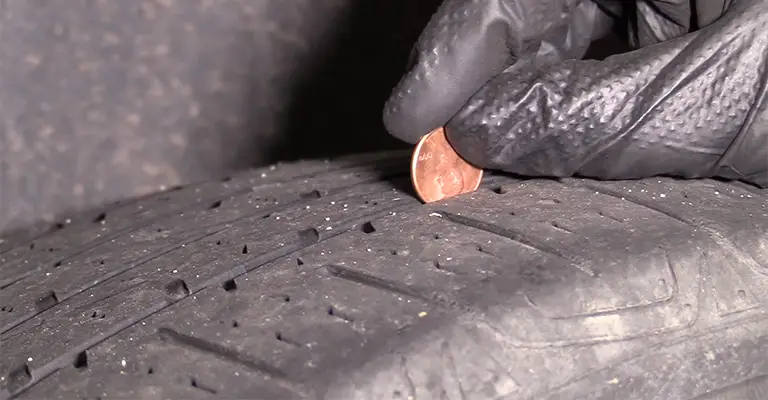
Understanding Tire Treads
Knowing about tire treads and their types will make it easier for you to analyze them. Speaking of which, there are 4 main components of tire tread –
- Ribs – Raised portion of tread block that spans around the tire
- Tread Blocks/Lugs – Raised segments that grip the road surface
- Grooves – Channels that run around the circumference of a tire
- Sipes – Thin slits across tread blocks
A tire’s tread blocks and ribs connect with the road, while the grooves channel water on wet roads.
Types of Tire Treads
Tire manufacturers use unique patterns on their tire treads, but they can be classified into 3 categories – each provides different performance and handling –
- Symmetric
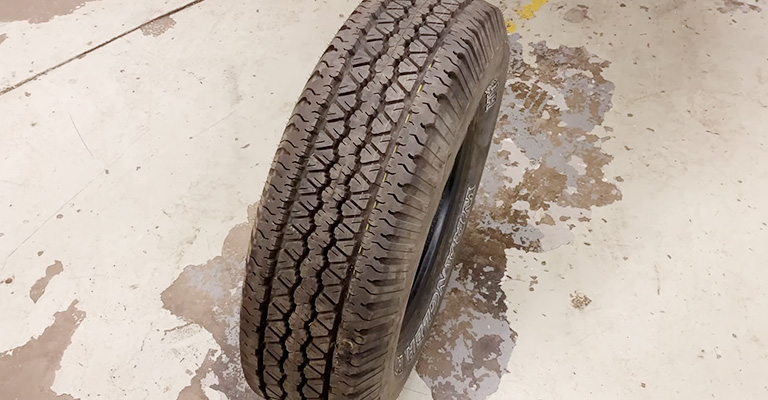
Symmetric tread patterns are the most common in passenger cars; these designs have the same patterns around the tire.
- Directional
Directional treads consist of lateral voids that point in one direction only, which gives it a distinctive ‘V’ design. These tread patterns are designed for performance cars.
- Asymmetric
Asymmetric tread patterns combine symmetric and directional designs. These designs are more commonly found in all-season tires.
Why Is It Important to Check Tire Tread?
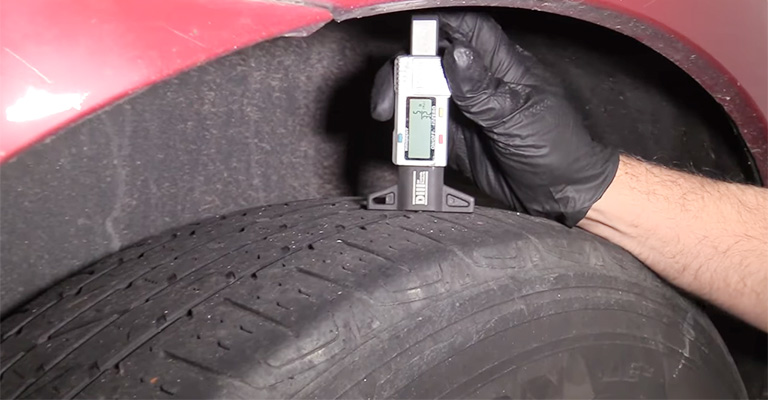
With worn-out tires, the treads can’t channel water effectively, which increases the risk of hydroplaning on wet road surfaces.
Similarly, worn-out tires will have their sipes disappear, so the tread blocks won’t provide sufficient grip on icy/snowy roads.
In such cases, it is recommended to start braking early for a longer stopping distance in slippery/wet conditions.
On the other hand, tires with worn-out treads are also more likely to lose air pressure or even get punctured.
A tire failure at high speeds can get very dangerous as you may lose control of the vehicle.
Therefore, it is good practice to check the treads of your vehicle’s tires frequently.
How to Penny Test for Tire Tread – Step-by-Step Instructions
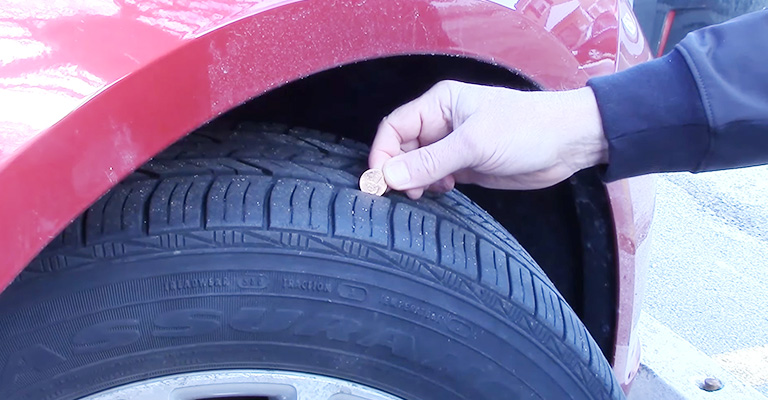
In the USA, a tire’s tread depth is measured by 32th of an inch. For example, most passenger vehicles have around 11/32” tread depths, while larger vehicles have even deeper tread depths.
The U.S. Department of Transportation suggests replacing old tires as soon as their tread depth reaches 2/32”.
With a simple penny test, you can check if your tires have reached the 2/32” threshold. Here’s how to do it –
Put a Penny Between the Treads of Your Tire
The coin has to be placed downwards so that Abraham Lincoln’s head points down towards the tread.
Check If the Top of Lincoln’s Head Is Visible
With Lincoln’s head facing into the tread, check if the top of Lincoln’s head disappears. If the top is not visible, it indicates that your tire’s tread is still more than 2/32”.
On the other hand, if Lincoln’s entire head can be seen, it’s because the treads aren’t deep enough, and the tire may need to be replaced s
Repeat the Process on All Tires
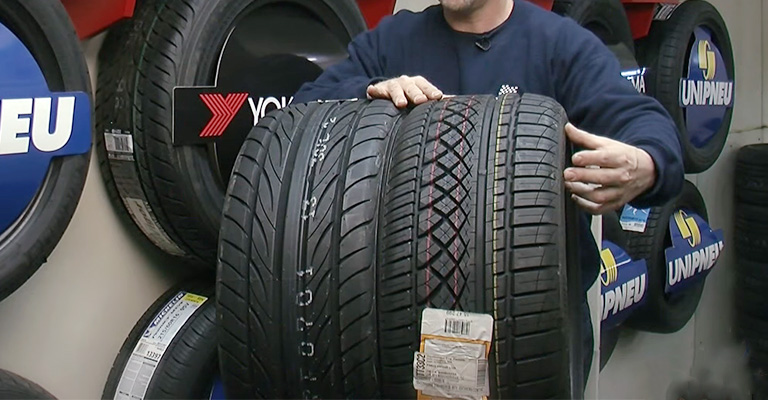
Use the penny to check the tire tread depth on all tires. While at it, remember to check on various spots of each tire to confirm if there is consistent wear.
Uneven tread wear indicates one or many problems, such as improper wheel alignment, tire tumors, etc.
If you notice uneven tread wear on your tire, you should get it checked by a professional to find out the cause.
Although the penny test is a great way to indicate if a tire has reached its limit, it is not good enough to indicate whether the tires are safe to be used on the road.
Tire performance can be affected significantly even before the 2/32” threshold is hit, so if you think your tires are giving out, get it checked ASAP!
Other Methods to Check Tire Tread
The penny test can also be done with a quarter coin. For the latter, you’d have to check if Washington’s head can be seen clearly.
You can check a tire’s tread in 2 other ways. They are as follows –
Tread Wear Indicator Bars
Nearly all commercial tires come with indicator/wear bars that are embedded in tread ribs at the 2/32” threshold.
If the tread becomes flush with the indicators, it is time to replace the tire.
Tread Depth Gauge
Using a tread depth gauge is the most accurate method of checking a tire’s tread.
All you’d have to do is stick the gauge’s probe-end into the tread and press its shoulders on the tread block.
While at it, read the result to check how deep the tread is and if it has reached the 2/32” threshold.
Frequently Asked Questions
What is acceptable tread depth?
Tread depths deeper than 6/32” indicate good tread depth.
When the depth reaches 4/32”, you should get the tire replaced with new ones soon.
A tread depth of 2/32” or lower indicates that the tire must be changed without further ado.
How many miles will 5/32 tires last?
At 5/31” tread depth, the tire can be used for around 5,000 to 10,000 miles.
The tread depth of a brand-new tire is usually 10/32”-11/32”.
Are tires only good for 5 years?
A general consensus is that most tires need to be inspected properly, if not replaced with new tires, after about 5-6 years of use.
On the other hand, tires older than 7-8 years should certainly be replaced, regardless of the tread depth left on them.
Final Verdict
With all of that being said, you should now know how to penny test for tire tread.
Keep in mind that a tire should be replaced immediately after its tread depth reaches 2/32”.
Driving with worn-out tires could lead to potentially fatal incidents, so it is better to be safe than sorry!
Leave a Reply